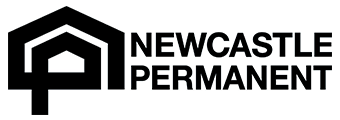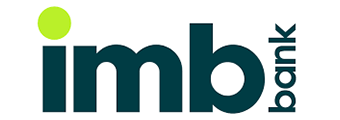Home loan comparison
Lender | |||||||||||||
|---|---|---|---|---|---|---|---|---|---|---|---|---|---|
| Variable | More details | ||||||||||||
| FEATURED | loans.com.au – Variable Home Loan P&I <90%
| ||||||||||||
loans.com.au – Variable Home Loan P&I <90%
| |||||||||||||
| Variable | More details | ||||||||||||
HSBC – Home Value Loan - Owner Occupied (LVR 70% to 80%)
| |||||||||||||
HSBC – Home Value Loan - Owner Occupied (LVR 70% to 80%)
| |||||||||||||
| Fixed | More details | ||||||||||||
Newcastle Permanent – Fixed Rate Home Loan (1 year)
| |||||||||||||
Newcastle Permanent – Fixed Rate Home Loan (1 year)
| |||||||||||||
| Variable | N/A | More details | |||||||||||
Beyond Bank – Purple Basic Variable Home Loan (>60%-80% LVR)
| |||||||||||||
Beyond Bank – Purple Basic Variable Home Loan (>60%-80% LVR)
| |||||||||||||
| Variable | More details | ||||||||||||
Athena Home Loans – Straight Up Owner Occupied - Obliterate (LVR < 50%) (Principal and Interest)
| |||||||||||||
Athena Home Loans – Straight Up Owner Occupied - Obliterate (LVR < 50%) (Principal and Interest)
| |||||||||||||
| Fixed | More details | ||||||||||||
IMB Bank – Fixed Rate Home Loan (Principal and Interest) (LVR < 80%) (1 year)
| |||||||||||||
IMB Bank – Fixed Rate Home Loan (Principal and Interest) (LVR < 80%) (1 year)
| |||||||||||||
| Variable | More details | ||||||||||||
Liberty Financial – Flexible Home Loan LVR >95% (Owner Occupier)
| |||||||||||||
Liberty Financial – Flexible Home Loan LVR >95% (Owner Occupier)
| |||||||||||||

- Available for purchase or refinance, min 10% deposit needed to qualify.
- No application, ongoing monthly or annual fees.
- Quick and easy online application process.
Base criteria of: a $400,000 loan amount, variable, fixed, principal and interest (P&I) home loans with an LVR (loan-to-value) ratio of at least 80%. However, the ‘Compare Home Loans’ table allows for calculations to be made on variables as selected and input by the user. Some products will be marked as promoted, featured or sponsored and may appear prominently in the tables regardless of their attributes. All products will list the LVR with the product and rate which are clearly published on the product provider’s website. Monthly repayments, once the base criteria are altered by the user, will be based on the selected products’ advertised rates and determined by the loan amount, repayment type, loan term and LVR as input by the user/you. *The Comparison rate is based on a $150,000 loan over 25 years. Warning: this comparison rate is true only for this example and may not include all fees and charges. Different terms, fees or other loan amounts might result in a different comparison rate. Rates correct as of July 10, 2025. View disclaimer.
Powered by:
 Savings.com.au
Savings.com.au
Savings.com.au Pty Ltd ACN 161 358 363 | Australian Financial Services Licence and Australian Credit Licence 515843
Purchase: Self-Employed Income Calculator
This calculator gives an estimate of self-employed business income.
Assumptions
The calculator assumes that:
- You have been self-employed for two years or more
- Depreciation, additional super contribution, and one-off expenses are add-backs for the purpose of calculating your business income;
- A lender will use your most recent tax return to calculate business income. However, if the business income is a 20% or more increase on the business income from the previous year, then the calculator assumes that a lender will use the average income from the past two years' tax returns.
Personal income is the total of the taxable income, rental income, and any other income input by the user.
Assessable income is the total of the personal income and business income.
How is my Self-Employed Income Assessed?
When borrowing money from a bank or a lender, a self employed person's income will be open to interpretation. Banks and lenders will always look on the historical figures and use this to assess your income.
To have a figure or an amount for your income, banks use your tax return from the previous years (in most cases the last two years) and add back things like depreciation, one off expenses and any additional superannuation you paid.
How to Show your Proof of Income
Below are some proof of income that self employed people can use to verify financial stability when applying for a loan.
Wage and Tax Return Statement
Wages and Tax Statement is a legal document and one of the most reliable proof of income for self employed people. It can help to prove that you are a tax payer with a stable earning from your business or a self employed job.
Profit and Loss Statement
This is a statement that summarizes your costs, expenses, and revenues of your business. This can be helpful especially when applying for a loan as it demonstrates you business' earning capabilities and could show how economical you are when handling loss.
Bank Statements
Your bank statement can also be a good proof if income especially if you have a history of consistent and regular deposits. When using your bank statements as proof of your income, it's best to have a separate account for your business, ensuring this business account is not used for any personal expenses.
Self Employment Income Calculator FAQs
To calculate your gross monthly income for self employment, you can add up your total sales revenue and deduct any refunds, the costs of goods or any service expenses from it. The total and final figure would be your gross income.
Lenders use your net income as a self employed individual. This is the total amount you have earned after deducting any relevant business expenses.
Yes, some lenders will offer you a mortgage after being self employed for only a year. However in most cases a lender will require you to be self employed for a minimum of 2 years in order to approve your loan application.
Base criteria of: a $400,000 loan amount, variable, fixed, principal and interest (P&I) home loans with an LVR (loan-to-value) ratio of at least 80%. However, the ‘Compare Home Loans’ table allows for calculations to made on variables as selected and input by the user. All products will list the LVR with the product and rate which are clearly published on the Product Provider’s web site. Monthly repayments, once the base criteria are altered by the user, will be based on the selected products’ advertised rates and determined by the loan amount, repayment type, loan term and LVR as input by the user/you. Rates correct as of 15 August 2025.
^The addition of offset sub-account means your comparison rate will change.
Powered by:
 Savings.com.au
Savings.com.au
Savings.com.au Pty Ltd ACN 161 358 363 | Australian Financial Services Licence and Australian Credit Licence 515843






